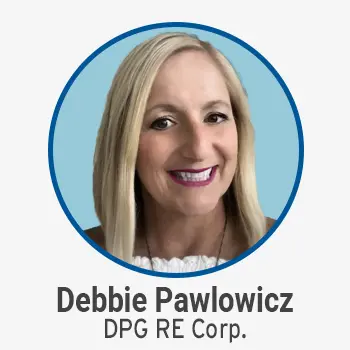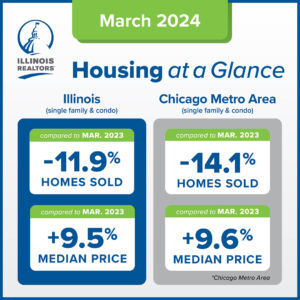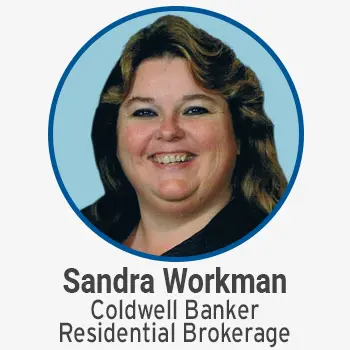Buying or selling a home can be one of the biggest financial steps many people will ever make. REALTORS® are at the heart of each transaction, bringing value, partnership and expertise to every aspect of the property ownership journey.
There are hundreds of ways REALTORS® help their clients navigate the risks, pitfalls, and complexities of buying or selling a home or property and reinforce their commitment and consumer-first approach.
1. Prepare the buyer for executing a buyer representation agreement
2. Explain agency relationships to the buyer and get state required legal consent to represent, if needed
3. Inform the buyer of working relationship based on state law, the REALTORS® Code of Ethics, and the broker’s business policies
4. Learn the buyer’s wants and non-negotiable needs
5. Understand the buyer’s budget and what will be needed financially
6. Help the buyer understand what property their chosen budget will buy
7. Consider having the buyer fill out a homebuyer’s checklist
8. Assist the buyer in examining how much they can afford to spend
9. Provide quality lender resources
10. Partner with the buyer to locate suitable properties for consideration
11. Match the buyer’s needs with available property
12. Constantly re-evaluate buyer’s needs and refocus property showings to fit those needs
13. After ensuring the buyer understands what is done for them, how it is done, and the benefit to them, obtain signatures on the buyer representation agreement
14. Explain how compensation is paid, who pays it, and what the buyer’s options are for paying it
15. Communicate the working relationship based on state law, the REALTORS® Code of Ethics, and the broker’s business policies
16. Explain Federal and State Fair Housing laws
17. Explain what to look for in applicable property disclosures
18. Reassure the buyer that their personal information will remain confidential
19. Inform the buyer that you will always disclose all known material defects
20. In accordance with state law, provide information on checking the sex-offender registry and crime statistics for the neighborhood
21. Discuss available resources that the buyer can check to learn more about prospective neighborhoods
22. Explain the timeline for house hunting, mortgage approval, and closing
23. Explain the local market and how it impacts the buyer
24. Show statistics on what percentage of list price sellers in the area are currently receiving
25. Inform the buyer on what home features are popular
26. Identify current average days on market
27. Share the dangers of using the price per square foot to figure home values
28. Explain the concept of absorption rate and how it impacts the buying process
29. Indicate current listing months of market inventory
30. Share estimated potential out-of-pocket costs to complete the transaction
31. Assist the buyer in analyzing the loan estimates
32. Qualify the buyer for financial ability to purchase
33. Help the buyer account for the complete costs of homeownership
34. Prepare lender for listing agent calls
35. Assist in comparing different financing options
36. Help the buyer select for viewing only those homes that fit their needs
37. Proceed in showing homes that fit the buyer’s must-haves
38. Caution the buyer on posting information to social media
39. Review the sample sales contract so the buyer is prepared when it comes time to make an offer
40. Schedule showings and provide access to all listed properties as soon as they become available in their local MLS broker marketplaces
41. Educate the buyer on the immediacy of new listings appearing in their local MLS broker marketplaces and the lag time for them to appear on some websites
42. Collaborate with the buyer on properties they may have learned about through their sphere contacts
43. Research and assist on all unlisted properties the buyer wishes to see
44. Preview properties prior to showing if needed
45. Network with other agents to source properties not yet in their local MLS broker marketplaces
46. Contact homeowners in focus areas to see if they are considering selling
47. Set up an automated email alert system through their local MLS broker marketplaces that immediately notifies the buyer of properties that fit discussed requirements
48. Arrange a tour of areas, schools, and key points of interest
49. Provide resources containing neighborhood information on municipal services, schools, etc.
50. Inform the buyer of negative aspects like nearby venues or operations that may result in issues that could impact value
51. Collect and share any other vital information on available homes, remembering to follow all fair housing laws at all times
52. Check applicable zoning and building restrictions
53. Help the buyer decipher public property and tax information
54. Collect and share pertinent data on values, taxes, utility costs, etc.
55. Compare each property shown to the buyer’s wants and needs list and remind them of what they were looking for
56. Help the buyer narrow the search until the buyer identifies top choices
57. Assist the buyer in getting the best property at the best price
58. Suggest that the buyer learn more about the neighborhood prior to making an offer
59. Prepare a comparative market analysis (CMA) in advance of making an offer
60. Prepare the buyer to have the most attractive offer in the current marketplace
61. Explain common contract contingencies and include approved protective clauses in the purchase offer
62. Ensure that the buyer receives and understands all state and federally- required disclosure forms
63. Prioritize contract negotiation goals with the buyer
64. Help create a negotiating strategy
65. Use strategies such as an escalation clause to maintain a competitive offer
66. Prepare the buyer for a multiple offer situation and develop negotiation strategies
67. Write an offer that has a reasonable chance of being accepted
68. Recommend optional contingencies and explain the pros and cons of using them
69. Provide information on purchasing incentives that may be available
70. Discuss financing alternatives
71. Negotiate the buyer’s offers to arrive at the best price and terms
72. Utilize hyperlocal expertise and strong communication skills to assist the buyer in being the successful offer
73. Advocate for the buyer throughout the entire process
74. Encourage the buyer to fully investigate their options in terms of a home inspector, title company, appraiser, mortgage lender, and other services
75. Present a list of the types of required and optional inspections such as environmental, roofing, and mold
76. Review and discuss home inspection concerns
77. Negotiate repair requests from home inspection
78. Guide the buyer on meeting all contract deadlines
79. Assist in coordinating communications
80. Advise the buyer to review the settlement statement
81. Inform clients that they need to transfer utilities to the new residence
82. Schedule final walkthrough
83. Accompany the buyer on the walkthrough
84. Assist the buyer in questioning the appraisal report if it affects the financing
85. Confirm clear-to-close with the lender
86. Ensure all parties have all forms and information needed to close the sale
87. Remind the buyer of the location where the closing will be held
88. Confirm the closing date and time, and notify parties if there are changes
89. Gather all required forms and documents for closing
90. Explain flood insurance to the buyer
91. Explain title insurance to the buyer and refer to qualified insurance broker
92. Order any surveys needed
93. Order the appraisal
94. Order the title search
95. Confirm the status of the loan funding
96. Check addendums and alterations for agreed terms
97. Review the buyer’s closing statement to ensure accuracy
98. Explain wire fraud risks and remind clients to verify all wiring instructions before transferring funds
99. Double-check all tax, homeowners’ association dues, utility, and applicable prorations, if relevant
100. Request final closing figures from the closing agent (often an attorney or title company)
101. Receive and carefully review closing figures to ensure accuracy
102. Receive and carefully review title insurance commitment with the buyer
103. Advise the buyer to re-key their locks and to consider a one-time cleaning service or landscaping before moving day
104. Review documents with the closing agent (attorney)
105. Support the buyer in any final closing activities

“I help my community understand how REALTORS® help people achieve the American Dream. I educate them on how this goal can be achieved. With the many obstacles that can occur throughout the process – even during the initial steps – I continually provide reassurance that I am with them to the end.”

“To help people achieve the American Dream, I have to have the ears to listen to what they want. Growing up in both Japanese and American cultures, I also appreciate when I can learn more about my clients‘ backgrounds because cultures can influence how they make their buying and selling decisions.”

“As a REALTOR®, I guide clients individually based on their current circumstances. I build trust and listen carefully. I stay up to date on buyer programs to better guide each client and connect them with lenders that can assist with the qualification process. I am with them step by step all the way to the closing table. It is always rewarding when I hand over the keys to someone’s new home – it’s the American Dream.”

“I believe everyone’s dream is different. For example, it may be someone’s dream to have a quaint little house on a lakefront that’s easy to maintain. It may be another’s to buy multi-family buildings and grow their portfolio into a rental empire. Listening to our clients and being resourceful, fast and transparent are the biggest factors to happy, closed transactions. We help our clients realize their dreams.”

“Educating my clients on the options and possibilities to buy their own home is my way of contributing to the American Dream. It’s shocking to me how many consumers don’t realize the variety of options they can use to buy a home, including little to ‘no money down’ loan programs, grants and seller-paid closing costs. The myth of needing large down payments can scare away many qualified buyers.”
179 WAYS
AGENTS WHO ARE REALTORS® ARE WORTH EVERY PENNY OF THEIR COMPENSATION.
Here’s a look at all the things — big and small— that an agent who is a REALTOR® may do to help clients when buying and selling a home.
You know you earn every penny you get when you sell a home. This list can help you show your customers exactly what you do to help them buy or sell their home.




 Create professional development programs that help REALTORS® strengthen their businesses.
Create professional development programs that help REALTORS® strengthen their businesses.
 Protect private property rights and promote the value of REALTORS®.
Protect private property rights and promote the value of REALTORS®.
 Advance ethics enforcement programs that increase REALTOR® professionalism.
Advance ethics enforcement programs that increase REALTOR® professionalism.
 Protect REALTORS® by providing legal guidance and education.
Protect REALTORS® by providing legal guidance and education. Stay current on industry issues with daily news from Illinois REALTORS®, network with other professionals, attend a seminar, and keep up with industry trends through events throughout the year.
Stay current on industry issues with daily news from Illinois REALTORS®, network with other professionals, attend a seminar, and keep up with industry trends through events throughout the year.


